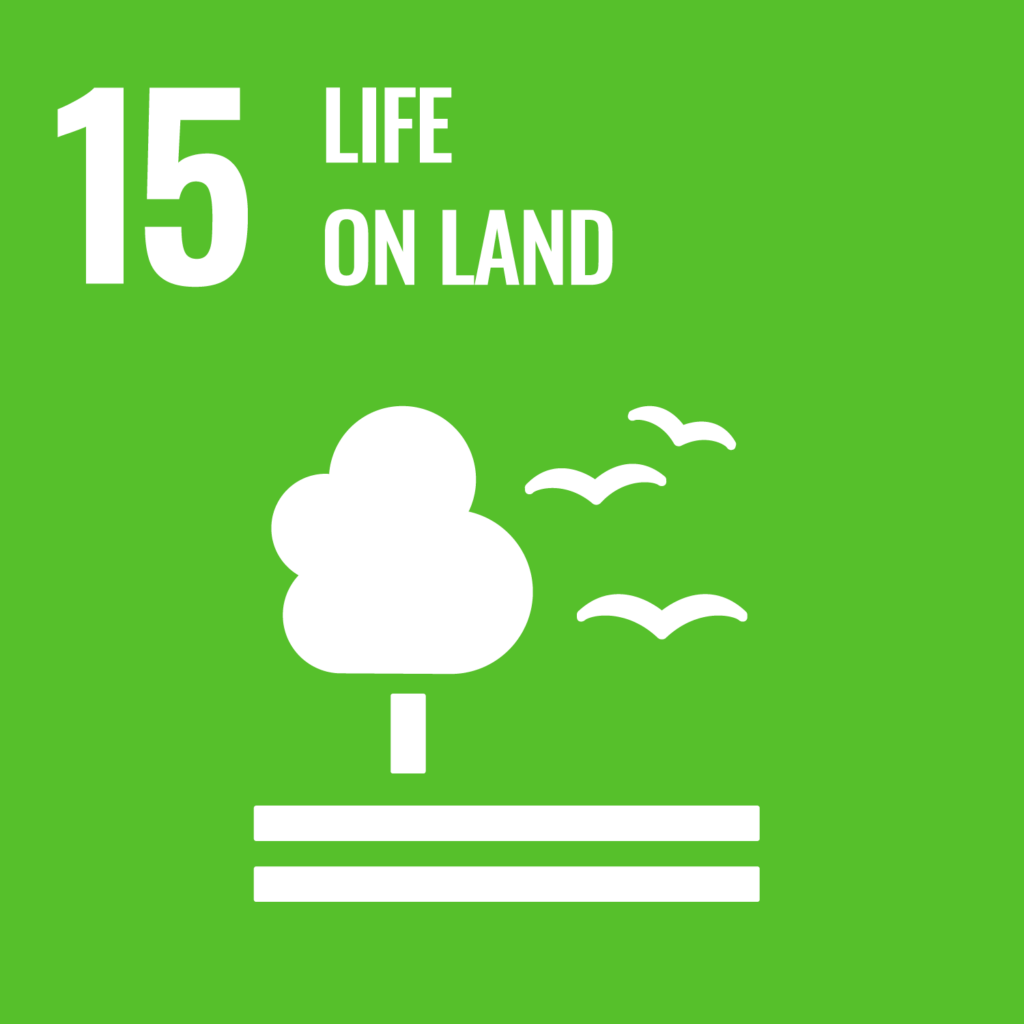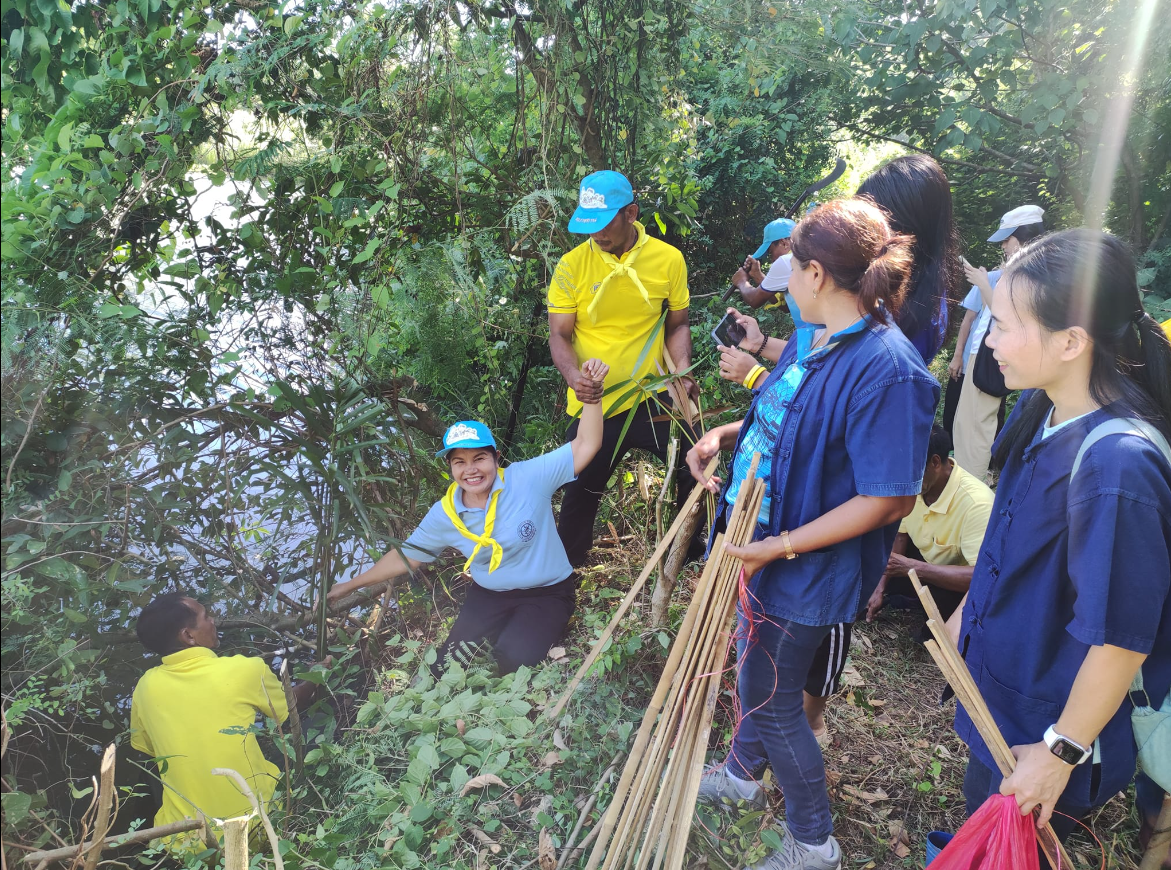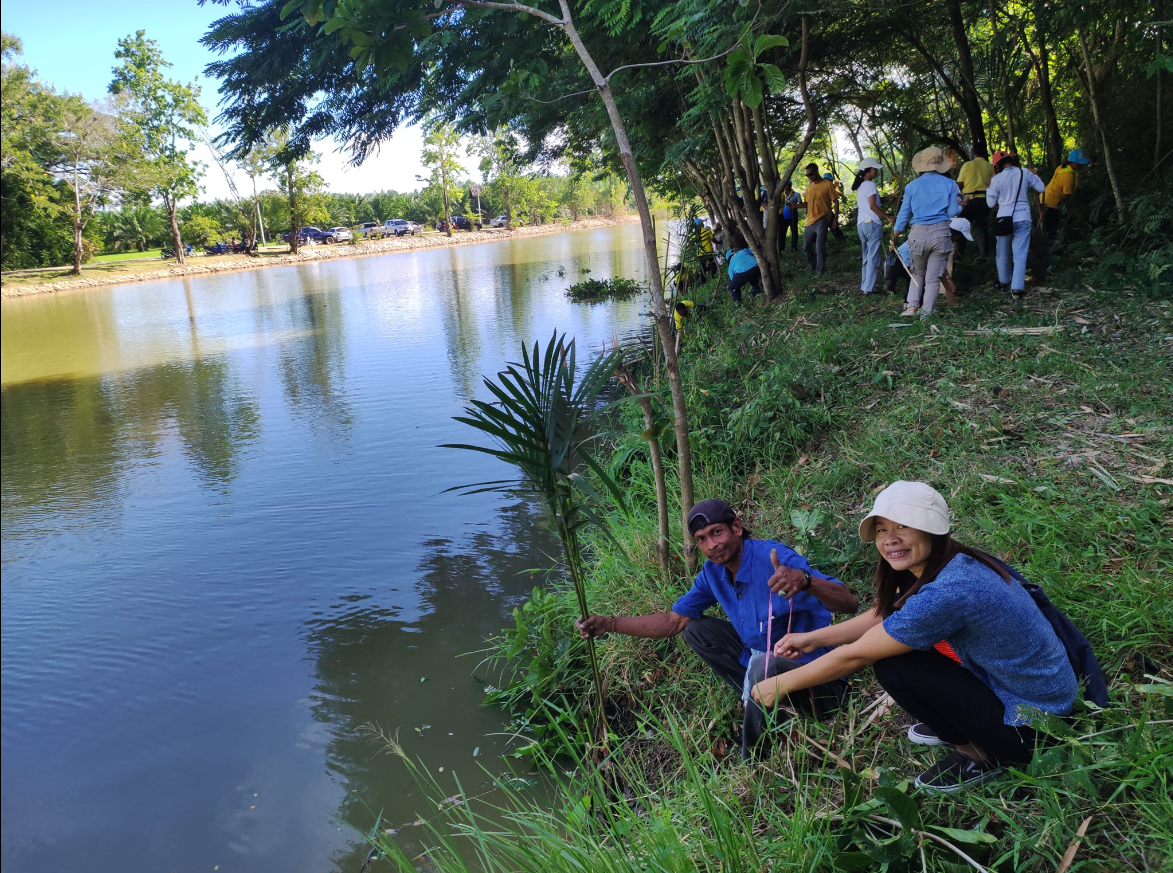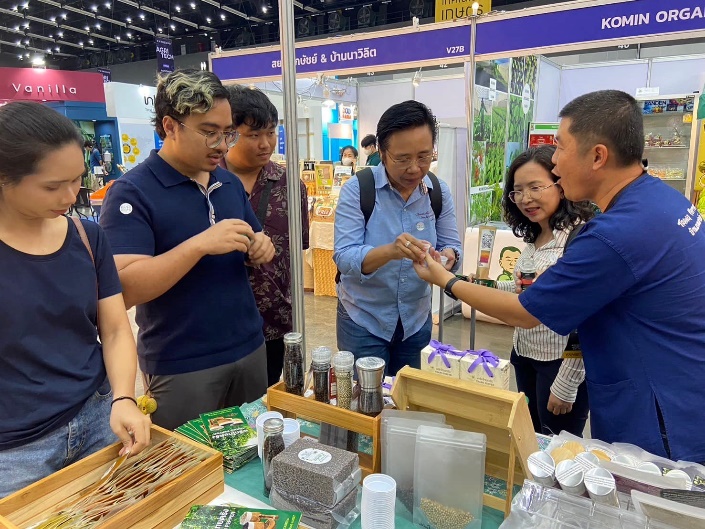Reporters: Asst.Prof.Dr. Prapot Maliwan
Assoc.Prof.Dr. Pornsil Seephueak
Asst.Prof.Dr. Nion Chirapongsathonkul
Asst.Prof.Dr. Worawitoo Meesook
Evidence Date: during 2023 Jan-Dec
Related SDGs:

Related Indicators: 15.2.4
Details:
The research project titled “Research and Innovation Development of Sago Production for Commercial Purposes in Phatthalung Province,” led by Asst. Prof. Kloyjay Krutjon and supported by the Fundamental Fund 2023, is dedicated to enhancing the ecological and economic value of sago palms (Metroxylon sagu Rottb.) within their natural habitats. A significant focus of this study is the “Area Management and Conservation of Sago Palm in Phatthalung Province for Sustainable Commercial Utilization.” By encouraging local residents to cultivate sago palms sustainably, this initiative not only supports the local economy but also emphasizes the importance of preserving these unique ecosystems. An event held on August 12, 2023, in Phatthalung Province, Thailand, aimed to promote the sustainable management of sago palm forests, which thrive in the region’s natural water sources. The conservation of sago palm habitats is essential for maintaining ecological balance, as these forests serve as vital habitats for various species and contribute to biodiversity. Collaborative agreements among community members are crucial for ensuring that sago palms are managed sustainably, balancing both utilization and conservation efforts. The research highlights the necessity for community-led initiatives to preserve sago palm areas, with several villages in Chai Buri District actively engaging in private and communal planting efforts to benefit future generations.
The findings of this research reveal a concerning trend among local farmers who are increasingly relying on sago palms for starch production, leading to a decline in sago palm forests. This decline poses a significant threat to the sustainability of this essential resource and the biodiversity it supports. To address these challenges, the research focuses on identifying effective propagation methods to ensure the conservation and continued use of sago palms. Various experiments were conducted to assess the survival rates of different seedling sizes in natural water sources, with results showing that seedlings with a diameter of 1.86 cm exhibited the highest survival rate of 40%. The research also explored the impact of seed size and treatment methods on germination, discovering that large, untreated seeds yielded the best results. While tissue culture methods were examined using leaf sections, shoot tips, and embryos, the slow growth rate of sago palms presents challenges in developing mature plants through these techniques. Therefore, natural propagation from offshoots has emerged as the most effective method for expanding sago palm cultivation in the region. Ultimately, this research promotes not only the sustainable use of sago palms but also encourages community involvement in conservation efforts, supporting local livelihoods while enhancing ecological integrity. Through these initiatives, the sago palm forests can thrive as critical habitats for biodiversity, aligning with Sustainable Development Goal 15, which focuses on the conservation of terrestrial ecosystems.



Related Links:
https://www.facebook.com/story.php?story_fbid=10225231191990045&id=1328663173&rdid=cG27BnuQPu5vlvb3



